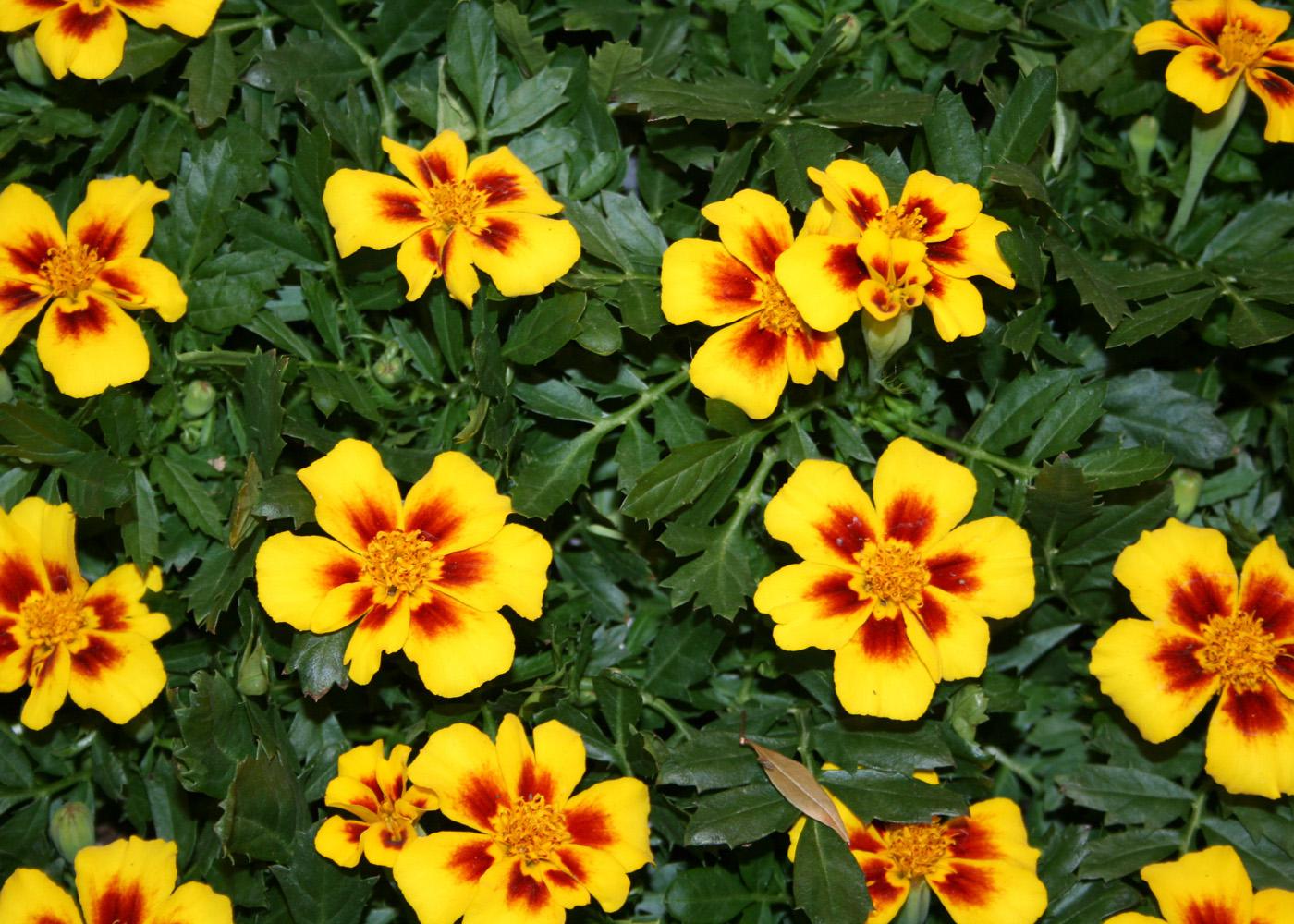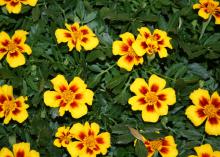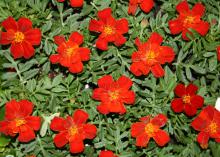Information Possibly Outdated
The information presented on this page was originally released on January 27, 2011. It may not be outdated, but please search our site for more current information. If you plan to quote or reference this information in a publication, please check with the Extension specialist or author before proceeding.
Use common marigolds for uncommon gardens
Many landscapes look drab and dreary in January, and extremely cold temperatures across the state have presented gardeners with an even bigger challenge than usual this winter.
But I had an uplifting experience last week when I attended the Gulf States Horticultural Expo in Mobile. I came away having seen the light at the end of the proverbial tunnel and remembering that the warm days of spring will soon be upon us.
One flower that may be my ultimate go-to flowering annual is the marigold. I know what you are thinking: marigolds? Yes, marigolds! With so many great plants out there, marigolds are still my go-to plant!
Marigolds are great in-ground or in containers, and they add a cheerful and colorful brightness wherever they are planted. Two outstanding varieties showing off at the expo were Disco Marietta and Durango Red.
Disco Marietta is a single-flowered marigold with yellow-orange petals featuring deep mahogany red splotches that look like paintbrush strokes at the base. Durango Red is a bright and cheery orange-red double flower that shows off bright yellow stamens in the center of the flower. Both are French marigold varieties and will stay under 12 inches tall.
There are more than 50 different species in the marigold family called Tagetes. All have compound leaves and fragrant flowers, though some gardeners find the fragrance unpleasant. These plants are diverse and worth taking a look at. For example, the herb Mexican tarragon is not in the tarragon family at all, but is actually a marigold. You can get several other varieties as well, but the two most commonly available are the American and the French marigold.
The American marigold is also commonly called the African marigold and is known scientifically as Tagetes erecta. There are many series available, and plants range in size from 15 inches to over 3 feet tall. A flowering annual series is a group of flowering annuals that have similar plant and flower sizes with many different flower colors.
American marigolds are recognizable for their pom-pom double flowers. Popular series include the First Lady, Discovery and Crackerjack. These series feature flowers of yellow, orange, dark orange and white. With their big flowers and tall stems, American marigolds sometimes need to be staked.
French marigolds, which are known scientifically as Tagetes patula, are smaller and have more flower variety than American marigolds do. There are single as well as double-flower varieties, and colors include yellow, orange, and red, as well as striped varieties. Popular series include Janie and Sophia. French marigolds are generally less than 15 inches tall.
Marigolds are free flowering from early summer to frost if you deadhead to remove the faded flowers.
I want to clear up the common marigold myth that they repel insects. In fact, spider mites are attracted to marigolds, and marigolds in the garden can make infestations worse. There is anecdotal evidence that marigolds help tomatoes thrive, so when I garden in-ground, I always plant marigolds around the tomatoes.
So as you examine a dreary winter landscape, I urge you to consider marigolds for your spring and summer landscape.
To many gardeners, they are just common yellow flowers, but they are used so commonly because they’re easy to grow and don’t require much care. As long as you plant them in full sun and water consistently, marigolds may just become one of your go-to plants this summer.









